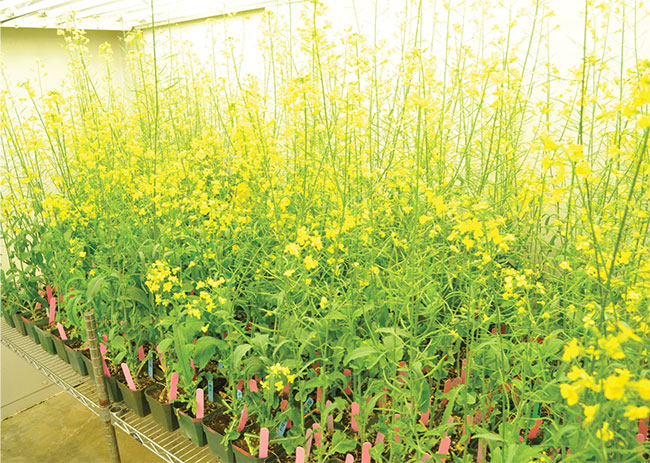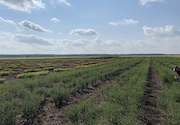| |
| |
 |
 |
| |
 |
|
@{mv_date_MMM d, yyyy}@ |
|
| |
True armyworm (TAW) larvae have been spotted in some winter wheat fields in Ontario, including in the areas of Chatham-Kent and Lambton County. This is in addition to cereal leaf beetle (CLB) larvae reaching threshold in some cereal fields, in some cases causing significant damage, according to Tracey Baute, field crop entomologist at OMAFRA.
» Read More...
The deadline to apply for the $20,000 Nuffield Canada Scholarship, a prestigious rural leadership program available to Canadian citizens who are involved in any aspect of agriculture, is June 30. "The goal for the scholarship is to attract mid-career men and women who are ready to challenge themselves by doing 10 weeks of self-directed international travel study to examine and research an agricultural topic they are passionate about."
» Read more...
The federal government's support for increasing crop diversity continues with an investment of more than $8.1 million to Ag-West Bio Inc. through the AgriScience Program – Clusters Component, an initiative under the Sustainable Canadian Agricultural Partnership. This initiative seeks to promote diverse crop rotations with small acreage crops that are able to withstand drought, heat, and soil nutrient deficiency.
» Read more...
|
| |

|

|
| |
|
| |

Bayer fungicides deliver the outstanding protection you need to improve quality, maximize yield potential and increase ROI. Prosaro ® PRO fungicide delivers enhanced protection against FHB and leaf disease in spring wheat and barley. Look to triple-action Delaro ® Complete fungicide for excellent control of major cereal, corn, edible bean and soybean diseases, including control of tar spot and suppression of white mould. There’s no better way to protect your crop and grow your ROI.
» Find your fungicide
|
| |
|
| |
 Canola growers rely on cultivars with genetic resistance as the best practice for managing blackleg disease, as fungicides have little effect in controlling blackleg. However, recently, the risk of blackleg incidence and severity is increasing, with the breakdown of the current resistance observed in some cultivars caused by the emergence of new virulent isolates.
» Learn more...
Canola growers rely on cultivars with genetic resistance as the best practice for managing blackleg disease, as fungicides have little effect in controlling blackleg. However, recently, the risk of blackleg incidence and severity is increasing, with the breakdown of the current resistance observed in some cultivars caused by the emergence of new virulent isolates.
» Learn more... |
| |
 Plant breeding models vary around the world, with efforts in Canada largely held by public institutions and large private multi-national seed companies. However, independent plant breeders are poised to bring complementary research and crop development to the sector to help farmers access new varieties specific to their needs and to keep new innovation in Canada.
» Learn more...
Plant breeding models vary around the world, with efforts in Canada largely held by public institutions and large private multi-national seed companies. However, independent plant breeders are poised to bring complementary research and crop development to the sector to help farmers access new varieties specific to their needs and to keep new innovation in Canada.
» Learn more... |
| |
| |
|
| |
|
|
| |
| |







